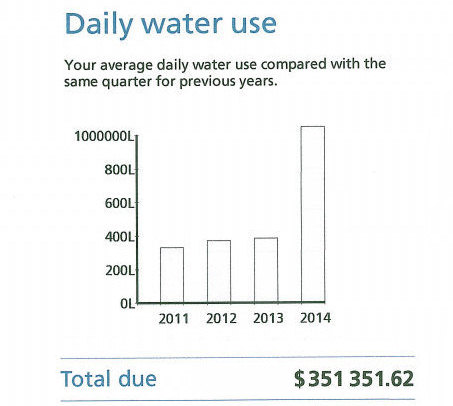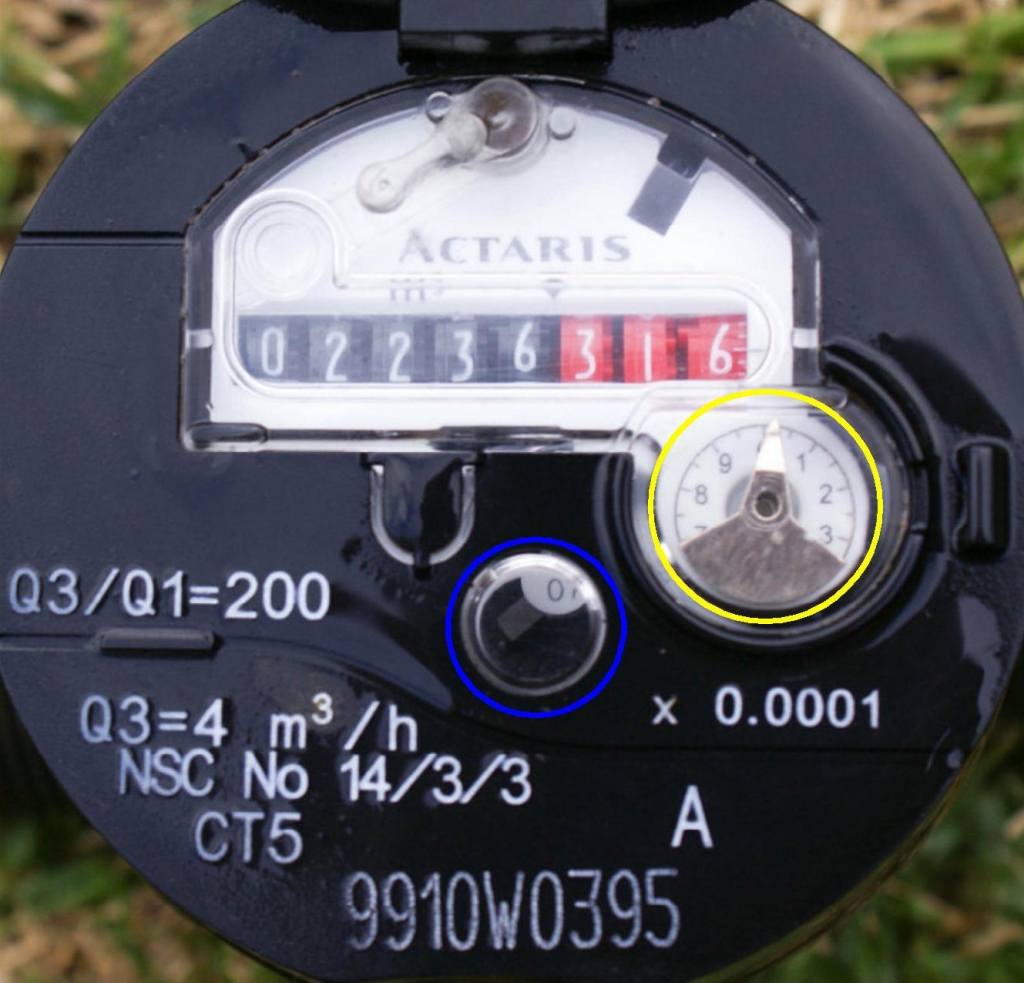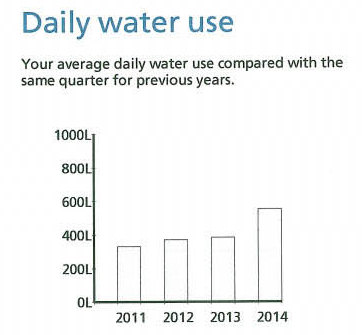
If you have an expensive water bill, this article will help you to determine the accuracy of your meter, and also check if you have a water leak in your pipework.

The meter shown above is the most common domestic water meter that I’ve seen in Adelaide. This meter has flowed 2,236,316L since new. The last red digit shows litres, and the last black digit shows thousands of litres. The wheel inside the yellow circle shows tenths of litres. One full turn of this wheel represents one litre so I’m going to call it the litre wheel. We can use this wheel and the red digits to test the water meter but it’s important to notice firstly that the window inside the blue circle shows the smallest volumes of water passing through the meter. For this reason I’m going to call this the fine wheel.
How to check the accuracy of your water meter
1. make sure all taps and valves are turned off (and try to do the test when nobody else is home because somebody could open a tap and wreck your test)
2. check the fine wheel by watching it for about 20 seconds to make sure that no water is passing through the meter. The fine wheel has white spokes on it which can be seen moving past the sighting window as it turns. If your fine wheel is turning and no toilet cisterns are filling, and no taps are dripping, then you have already determined that you have a leak in your water service and you won’t be able to test your meter (not like you will care about that once you know you have a leak somewhere)
3. you need to find a container with measurement graduations on it (some mop buckets) or with a known volume like a milk container. The larger the container the more accurate your test will be.
4. record the red numbers AND the position of the litre wheel (in the picture above, the litre wheel is reading just more than 0 – I would call it 0.2)
5. run a tap (don’t use a garden hose for this test) into the container you’re measuring with and stop the tap when you reach your known volume.
6. record the red numbers and the position of the litre wheel again.
7. calculate the difference between the two readings and confirm that it is equal to the volume of water you ran into the container.
There isn’t a high degree of precision in this test but it should be good enough to satisfy you that your water meter is reading good numbers. If you’re sure that your meter is reading high, you can ask SA Water to test it for a fee which they will waive if the meter reads more than 5% above true, and they will replace the meter at no charge.
Can my water meter roll when I’m not using water? No – it’s impossible. The energy required to turn the numbers in the meter comes from water passing through the meter. If somebody could work out how to make stuff move without any energy being put into it…
Do I have a water leak in my plumbing? If your quarterly water consumption suddenly jumps compared to the same time last year, then your water usage behaviour has changed, or you have a leak. You can check to see if you have a leak by following steps 1 and 2 in the procedure above.
Why does my average daily water use always increase? I’ve had many customers tell me that their average daily use increases every year and mine is the same. It’s a fascinating question because most of us have installed water saving showers and high efficiency toilets and we are sure that our behaviour hasn’t changed. I don’t have an explanation for this one!

My average daily water use jumped this quarter because I had a broken fitting in my lawn irrigation. A car drove on a sprinkler and broke the fitting under it and since irrigation comes on at night when I’m not looking at it, I didn’t notice that most of the water was bubbling out of the ground and not coming out of the sprinklers. Even plumbers get caught out with nasty little water leaks escaping their attention! I also had a sneaky leak on my evap air conditioner a few years ago where the fill solenoid stuck open and overflowed the reservoir for weeks before I noticed. The evap overflow went into a pipe which then went into my sewer vent so I didn’t see any water out of place. The leak was also slow enough not to hear water running but it made a very nasty difference to my water bill that quarter.
My consumption is up, my meter is true and my fine wheel doesnt indicate a leak – now what? This situation indicates that something is using water faster than normal when it uses water. For example your evaporative air conditioner might be dumping water at shorter intervals, or your automated irrigation has a leak. Another one is solar hot water – if we have hot sunny days, your solar hot water can get so hot it will open the temperature relief valve and dump water while you’re at work. These are the types of things that won’t show up when you watch your water meter’s fine wheel and no doubt there’s other things like ice makers and pool filtration systems which could consumer water atypically and spike your water consumption.
